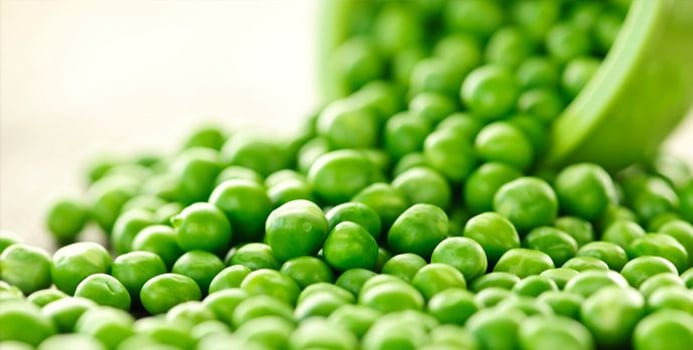Have you been considering cutting back on your meat intake but are worried about feeling too hungry? Contrary to popular belief, you don’t have to eat meat to feel full and satisfied. In fact, according to new research, quite the opposite is true. What may be surprising to some (not to this gal, who loves plant proteins!) is that a recent study revealed that meals that were based on vegetable protein sources were more satiating than meals centered on meat protein sources.
The Study
People choose to eat less meat or abstain from eating meat altogether for a variety of reasons, including possible nutritional benefits from avoiding meat, potential health promotion from consuming more plant proteins, concern over animal welfare or for environmental protection and sustainability, or the affordability and versatility of plant proteins. But researchers wanted to figure out if plant proteins could satisfy your appetite as much as animal proteins and also taste just as good as meat proteins.
In the randomized, placebo-controlled, double-blind, three-way crossover meal test that involved 43 healthy young men of normal weight, the participants received high-protein meals centered on pork and veal, high-protein meals centered on legumes (peas and beans), or low-protein meals centered on legume foods. Researchers recorded subjective appetite sensations before the participants ate and every half-hour over the three-hour post-meal period. The high-protein legume meals resulted in a reduced appetite and feelings of hunger, a higher feeling of fullness, and lower overall food intake (12-13 percent lower total energy intake). Also, participants ranked their satiety level higher after the high-protein legume-based meal versus the meat-based meal. Surprisingly, researchers also found that the low-protein vegetable-centered meal was as palatable and satiating as the high-protein animal protein meal.
Other Research
Research published in the Journal of the American Medical Association found that eating more plant sources of protein was correlated with a lower risk of death while eating animal protein was correlated with a higher risk of death.
Power Up with Plants
Lentils — One cup of this protein powerhouse provides you with 18 grams of hunger-squelching protein as well as 16 grams of filling fiber. They are also an excellent source of both iron and vitamin B6. Use lentils to make faux meatloaf or meatballs, or toss them into a hearty soup.
Nuts and Seeds — Portable, crunchy, and full of beneficial minerals. A quarter cup serving of nuts or seeds provides about 7-9 grams of protein. Toss them into salads, breads, desserts, yogurt or oatmeal. Vegan cheeses are often made from nuts such as cashews and almonds and have a very similar taste and texture of real dairy cheese.
Peas — One cup of peas packs a powerful 9 grams of protein. Peas please the palate in pasta dishes, soups, purees, and casseroles, and food manufacturers are adding pea powder to a deluge of products these days to up the protein content.
Beans — One cup of cooked beans gives you around 15 grams of protein. Pair beans with rice to make a complete protein.
Nutritional Yeast — This deactivated yeast--often affectionately called nooch — is poised to soar in popularity in upcoming years. This delectable ingredient lends a savory, cheesy flavor to your foods and is full of protein. Of course, it makes a yummy accompaniment to soup and pasta dishes, but I love to sprinkle it on popcorn and over roasted veggies. One tablespoon of this marvelous stuff contains a mere 20 calories, 3 grams of protein and 1 gram of fiber, while also providing 180% Daily Value of thiamin (vitamin B1), 160% Daily Value of riboflavin (vitamin B2), 140% Daily Value of pyridoxine (vitamin B6), 40% Daily Value of folic acid and vitamin B12, and 30 percent Daily Value of pantothenic acid. Nutritional yeast is also a complete protein, which means it contains all nine essential amino acids that your body can’t produce.
Quinoa — This gluten-free grain (technically, it’s a pseudo-cereal) is a complete protein and an excellent source of fiber. One cup of cooked quinoa contains 222 calories, 5 grams of fiber (21% Daily Value) and an impressive 8 grams of protein. Use quinoa any way you’d use rice.
The Bottom Line
Switching from animal-based proteins to more plant-based proteins is not a magic bullet that will automatically make you lose weight or prevent or cure all ailments. However, what this research and previous research has shown is that you can meet your protein needs from plant sources alone, and in the process you may lose some weight if the switch results in you cutting your total calorie intake. You should really only be eating about 30 grams of protein at a time, or about 4-6 ounces per meal. While prioritizing plant proteins over meat sources of protein may have health benefits, you shouldn’t shun other nutritious foods such as fruits, veggies, healthy fats and whole grains.
For long-term sustainable weight loss and eventual healthy weight maintenance, aim for a well-balanced diet with a variety of colorful fruits and vegetables, whole grains, healthy fats, and lean proteins in proper portion sizes and be sure to aim for at least 60-90 minutes of physical activity each day.
[Image via Getty]



